
 |
|
|||||||
| FM/DM threads Everything about FM/DM in CoD |
 |
|
|
Thread Tools | Display Modes |
|
|
|
#1
|
|||||
|
|||||
|
Quote:
Quote:
Quote:
You have seen that one, I gave you the link, and IIRC you also got a heart attack when a British doc mentioned that one of their driving force for getting 100 octane is that German synth plants are so suitable for producing virtually any amount. Quote:
Quote:
There are two practical problems: - only a couple of random docs are digitized. I am quite sure there's a lot more WW2 100 octane in the AWM than the four or so papers it lists... some of the paper, like 'Proposals for...' is clearly copies of British papers. - not all papers are entered into the registry. The paper recently shown and posted in this thread about the Australian attempt to buy/mix/steal/whatever 100/95/90 octane is only open since 2009 or so, at least as I recall from its sheet. Archives often have only minimal staff and tons of papers, which is colossal work to register. When last time I was in the HTK archives, the registry was some DOS 6.0 based database program on something that resembled a 486 or an early 586. Do you even know what these things were? So if you think that it's just a case of browsing through the online archives, you will be disappointed. Some times questions like this just solve themselves in time.
__________________
Il-2Bugtracker: Feature #200: Missing 100 octane subtypes of Bf 109E and Bf 110C http://www.il2bugtracker.com/issues/200 Il-2Bugtracker: Bug #415: Spitfire Mk I, Ia, and Mk II: Stability and Control http://www.il2bugtracker.com/issues/415 Kurfürst - Your resource site on Bf 109 performance! http://kurfurst.org 
|
|
#2
|
|||
|
|||
|
Hi Kurfürst, I have some questions about the "Australian document".
Quote:
How do you know that the listed persons quoted from the report, where can these quotes be found? Is the following quoted text a summary/interpretation by Pips or is this a actual quote of the document? Quote:
|
|
#3
|
|||
|
|||
|
Your playing your game again Kurfurst only quoting one paper from a complete stream. However you believe that certain means 25%, so prove it. All you need to do is look at the strength of FC compare it to the combat reports/squadron records and you will have your 25%.
Pips clearly states Two actions were immediately undertaken by the British War Cabinet in May to resolve the looming crisis. Firstly 87 octane fuel was deemed the primary fuel source to be used until further supplies could be discovered and delivered in sufficient quantities to allow the Merlin conversions to again take place We know the War Cabinet didn't make those decisions so find out who did, simple request. The other core to the Pips position is that there was a shortage of 100 Octane which caused the decision he believes the War Cabinet made. I ask you to find any reference to any paper from any official source that states that there was a shortage of 100 Octane for FC in 1940. Last edited by Glider; 02-29-2012 at 07:38 AM. |
|
#4
|
|||
|
|||
|
I realise this thread is a bit acrimonious but overall the content has been very interesting. The technical points have already been made but I am interested in the logic of is being argued.
Kurfurst, your argument appears to be that it cannot be proved definitively that all fighter stations during the BOB used 100 octane. On that narrow definition you are quite right, especially if you hold your own personal threshold of 'absolute proof' very high. But based on the material presented in this thread, I still consider it likely that the BOB was fought largely if not completely with 100 octane. Almost all others in this thread, and also the previous very large thread on the same topic at another forum, seem to be of the same opinion. Perhaps someone in these threads at some point has stated that ALL RAF fighters were using 100 octane by the BOB without exception, but if you are arguing against that statement, you are presenting a variation of the straw man argument...refuting the most extreme position of your opponents instead of the typical position (and declaring victory!). Neither using or not using 100 octane in the BOB is an extraordinary claim that requires extraordinary evidence, or extra onus of proof on either side. Personally I could easily believe either of them, and have no initial bias that I am aware of. An extraordinary claim would be that the RAF had a jet squadron during the BOB, for example. Typically when deciding between such competing ordinary claims, people examine what evidence exists and make a qualified judgement on the topic to move forward with. Seeing there is an large amount of anecdotal evidence for widespread use of 100 octane as reported in this thread, also a compelling historical reason to use 100 octane, and finally documented historic availability of 100 octane, it doesn't seem surprising to me your argument is not being taken up or accepted by others. Going against the crowd is of course not a logical problem. If you argued against the existence of witches in the 1600s, you would be widely refuted but still correct (I hope!). But for every case like witch existance/nonexistance, there are many many more cases where the person arguing against informed peer belief is just mistaken. Of course your continuing arguing from your corner has lead to a lot of interesting technical information posted, and for that I thank you. camber |
|
#5
|
|||
|
|||
|
And still, amongst all of his blather, KF has not presented any evidence whatsoever that the Pips memo actually exists, nor has he seen it himself except as a summary on a thread. Yet everyone who argues against KF has to provide solid, documentary evidence to back up their claim, otherwise it is dismissed out of hand.
|
|
#6
|
|||
|
|||
|
even in the current german http://www.flugzeugclassic.de/zeitsc...ft=704&nav=621 issue, the talk about 100 octan for the RAF fighters in the BoB campaign. It seems everyone is rong lol....
|
|
#7
|
|||
|
|||
|
There is plenty of documentation of 100 octane fuel use before and during the Battle of Britain. For starters:
 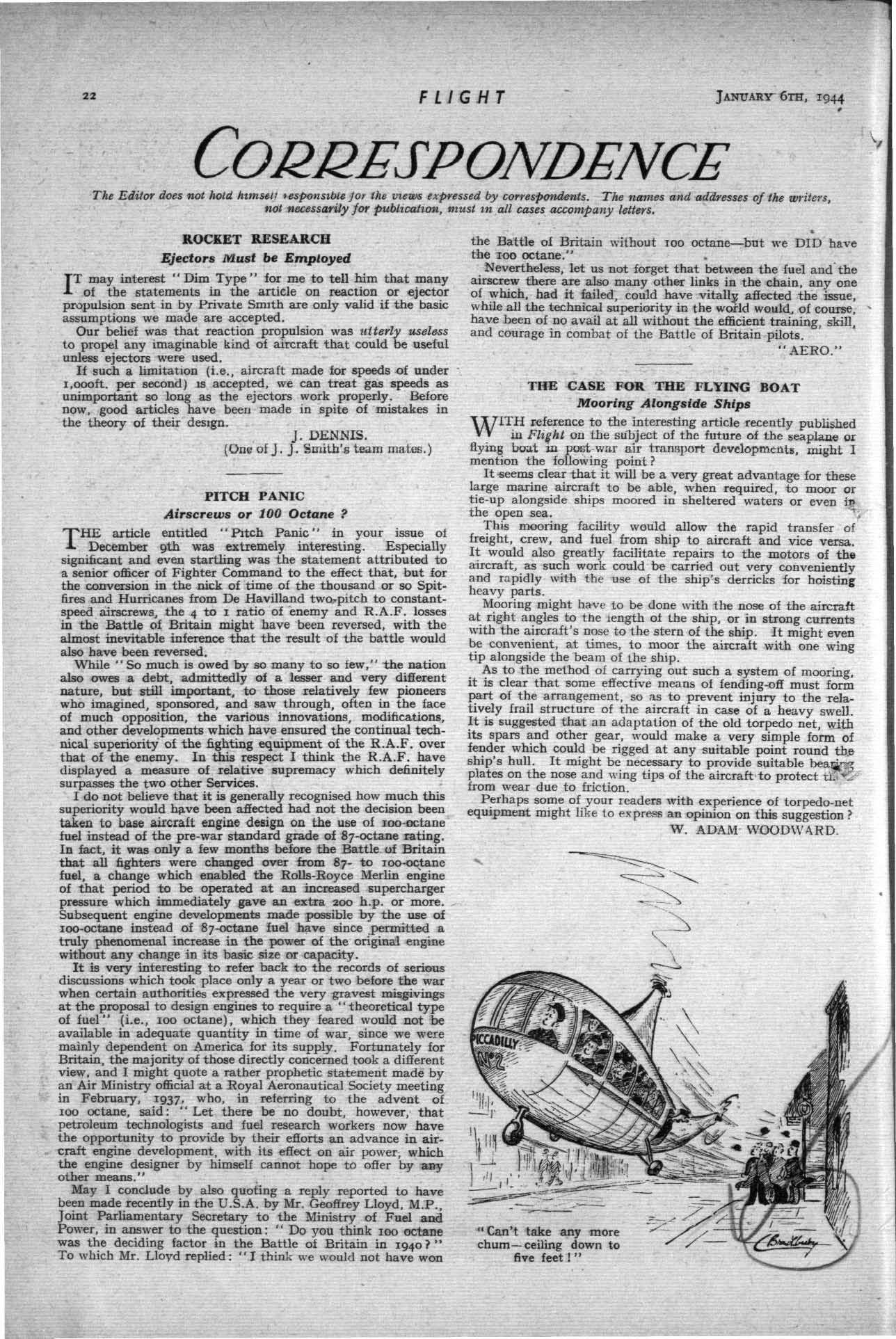 602 Sqdn. Operations Record Book 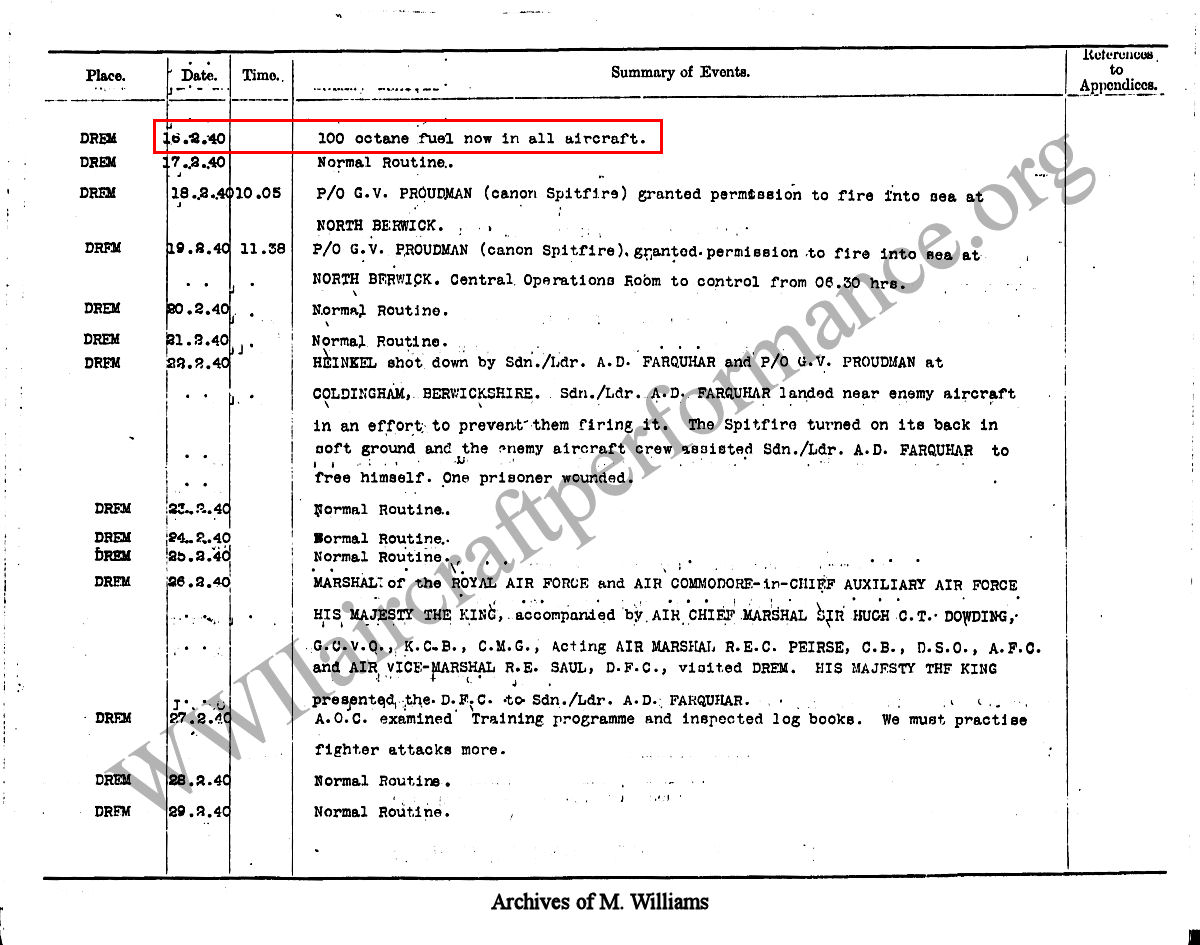 611 Sqdn. Operations Record Book 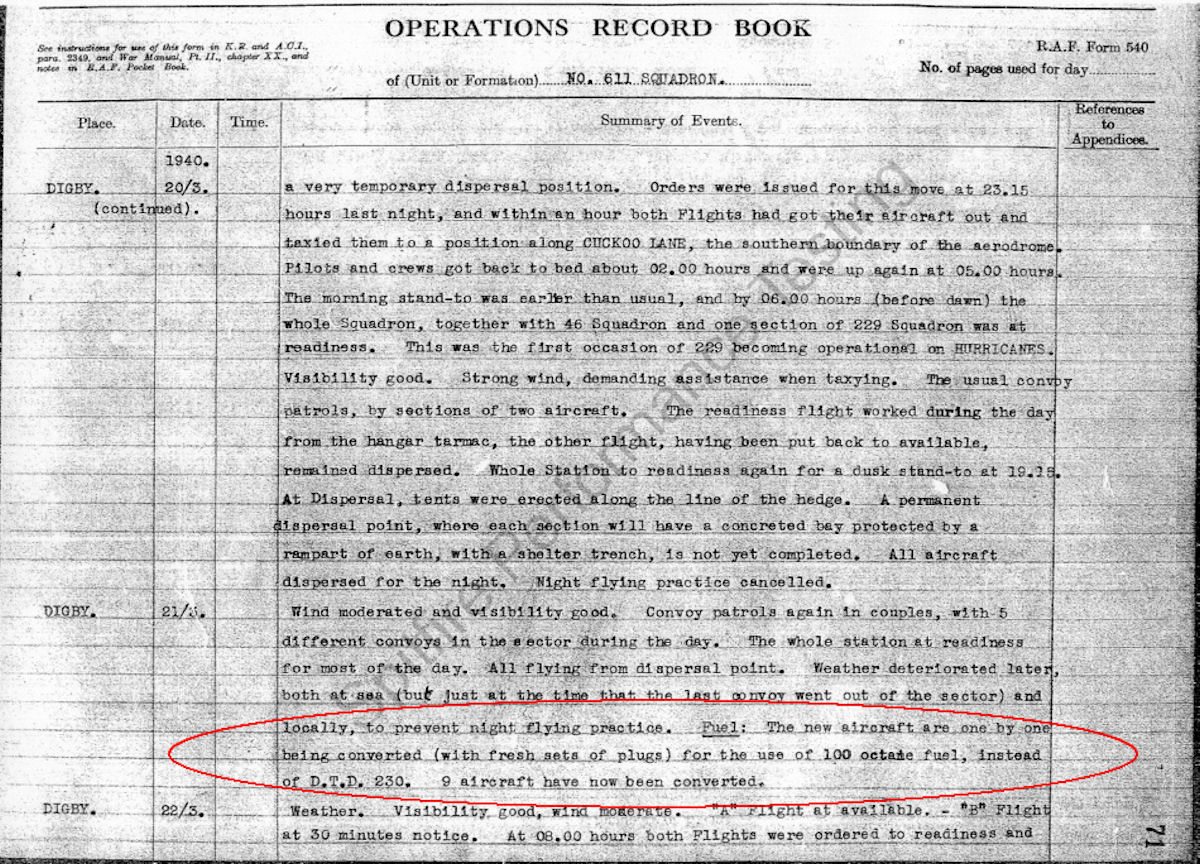 151 Sqdn. Operations Record Book 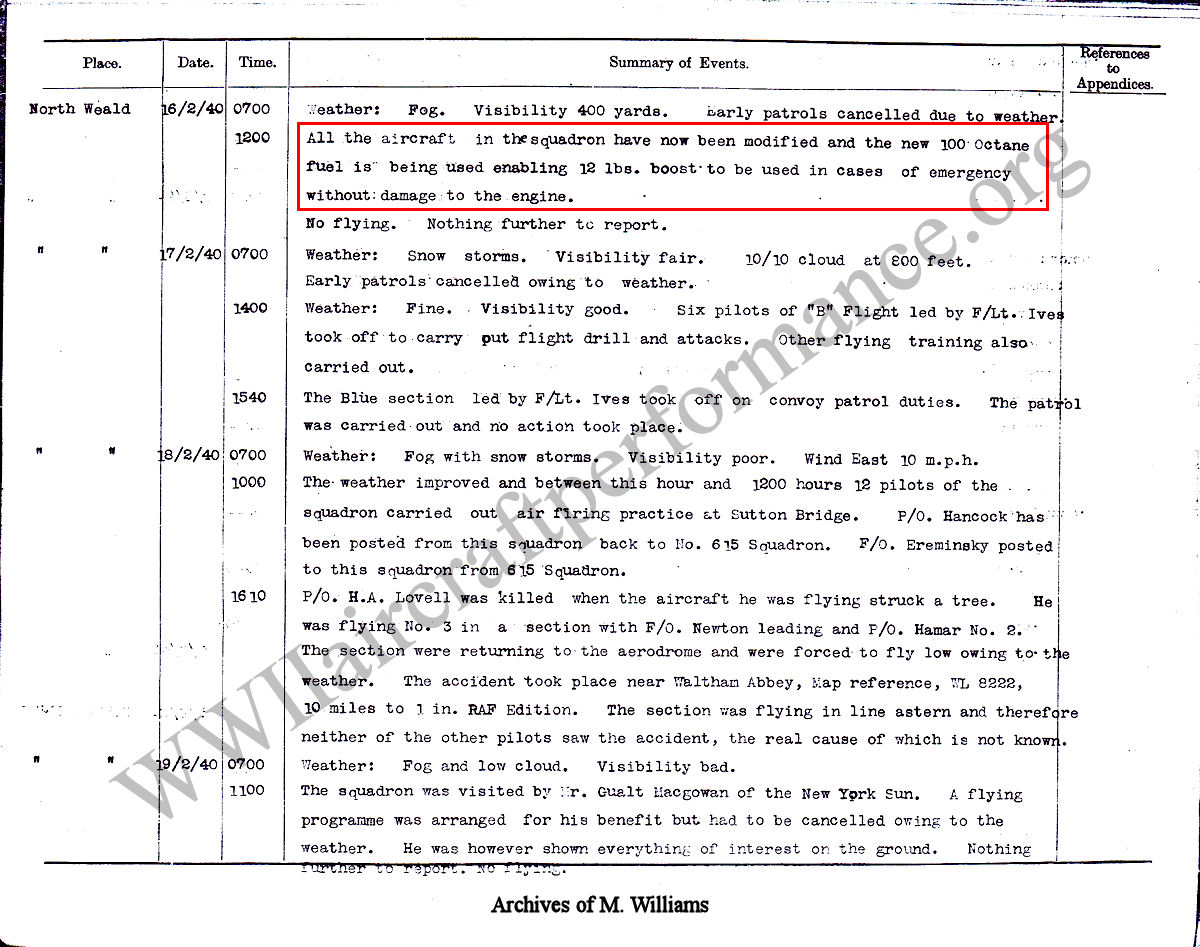 74 Sqdn. Operations Record Book  111 Sqdn. Operations Record Book 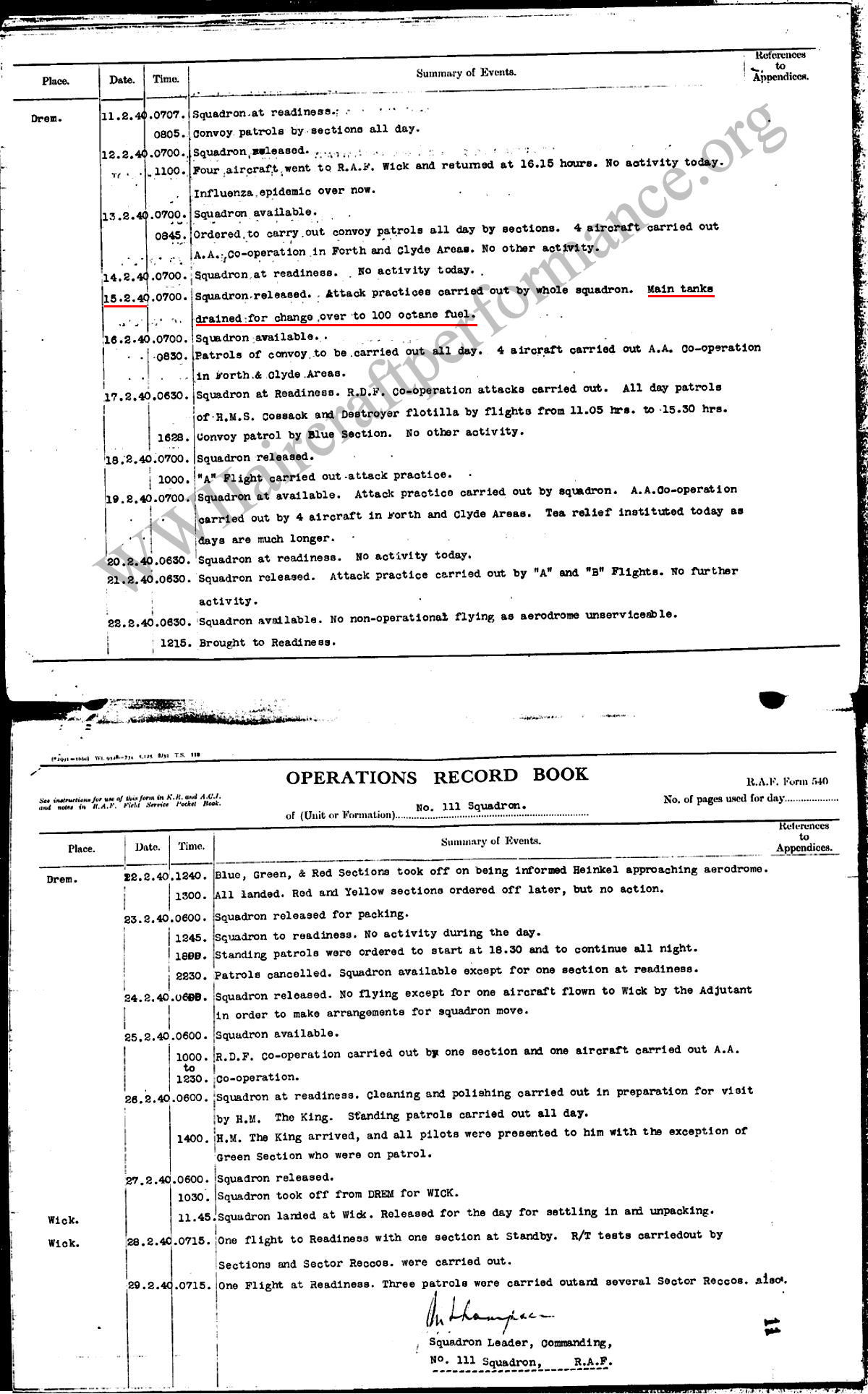 David Ross, The Greatest Squadron of Them All, The Definitive History of 603 Squadron, RAauxAF, (Grub Street, London, 2003)  Alec Harvey-Bailey, The Merlin in Perspective, (Rolls-Royce Heritage Trust, Derby, 1983) 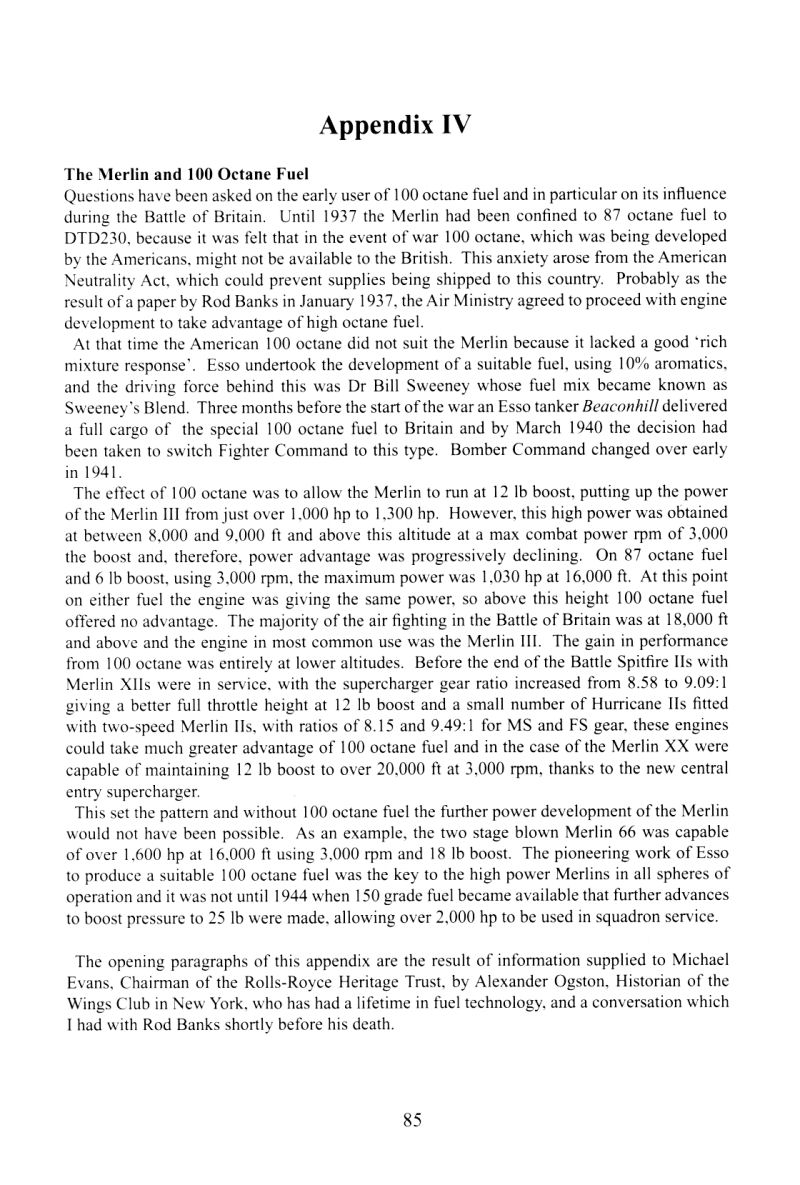 Alfred Price, The Spitfire Story, (Arms and Armour Press Ltd., London, 1986) 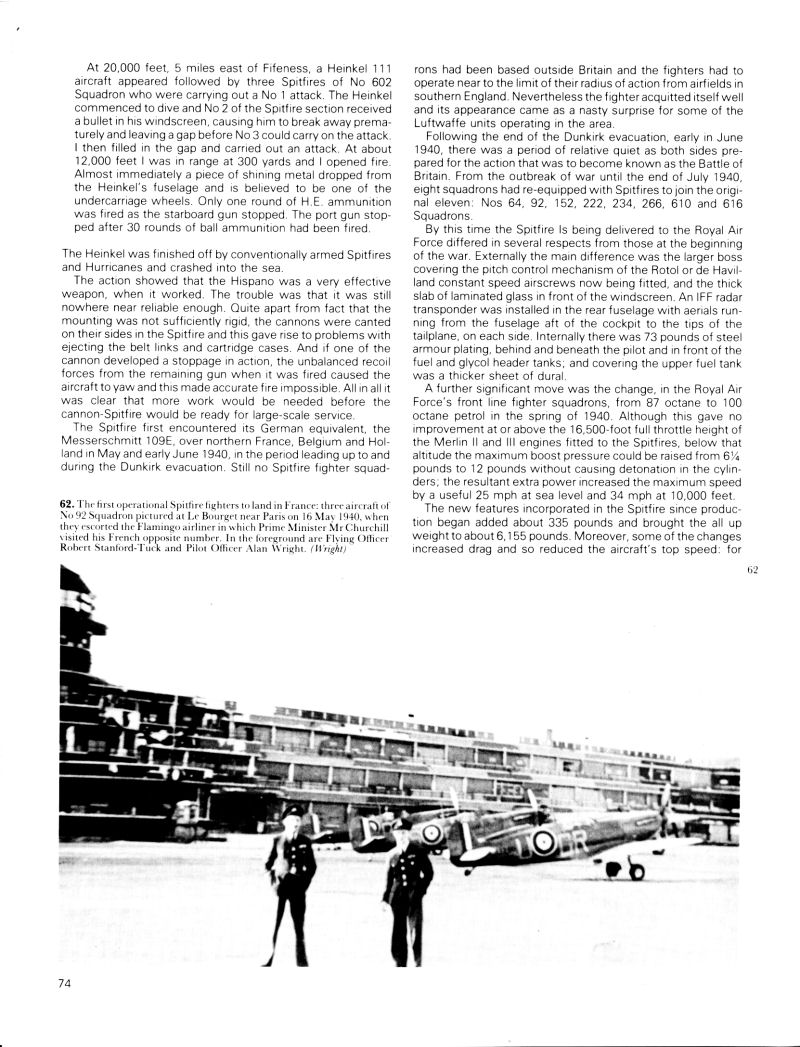 Leo McKinstry, Hurricane, Victor of the Battle of Britain, (John Murrey Publishers, London, 2010)  Leo McKinstry, Hurricane, Victor of the Battle of Britain, (John Murrey Publishers, London, 2010) 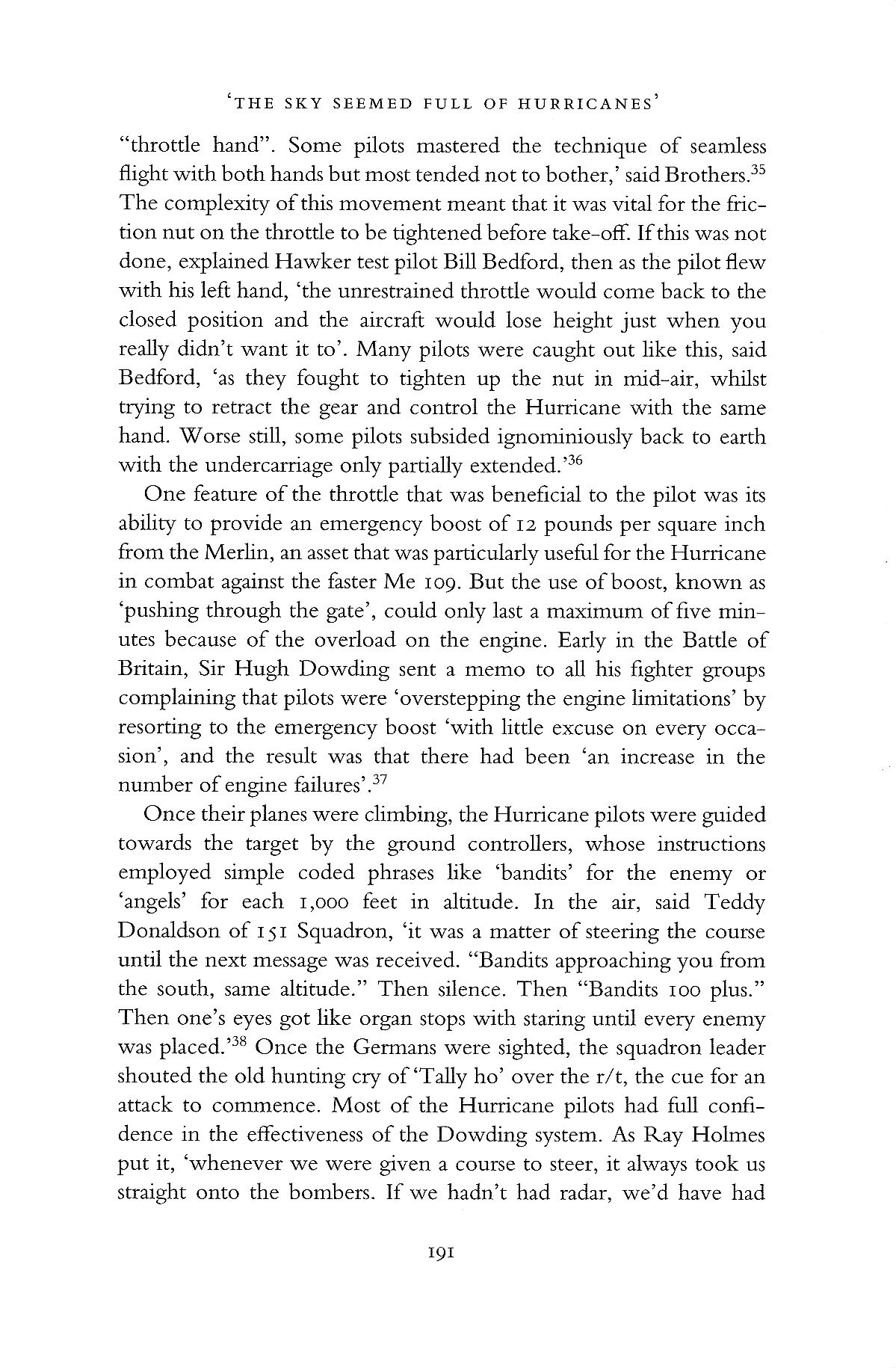 W.G. Dudek and D. R. Winans, excerpt from AIAA Paper No. 69-779, Milestones in Aviation Fuels, (Esso Research and Engineering Company, New York 1969.) 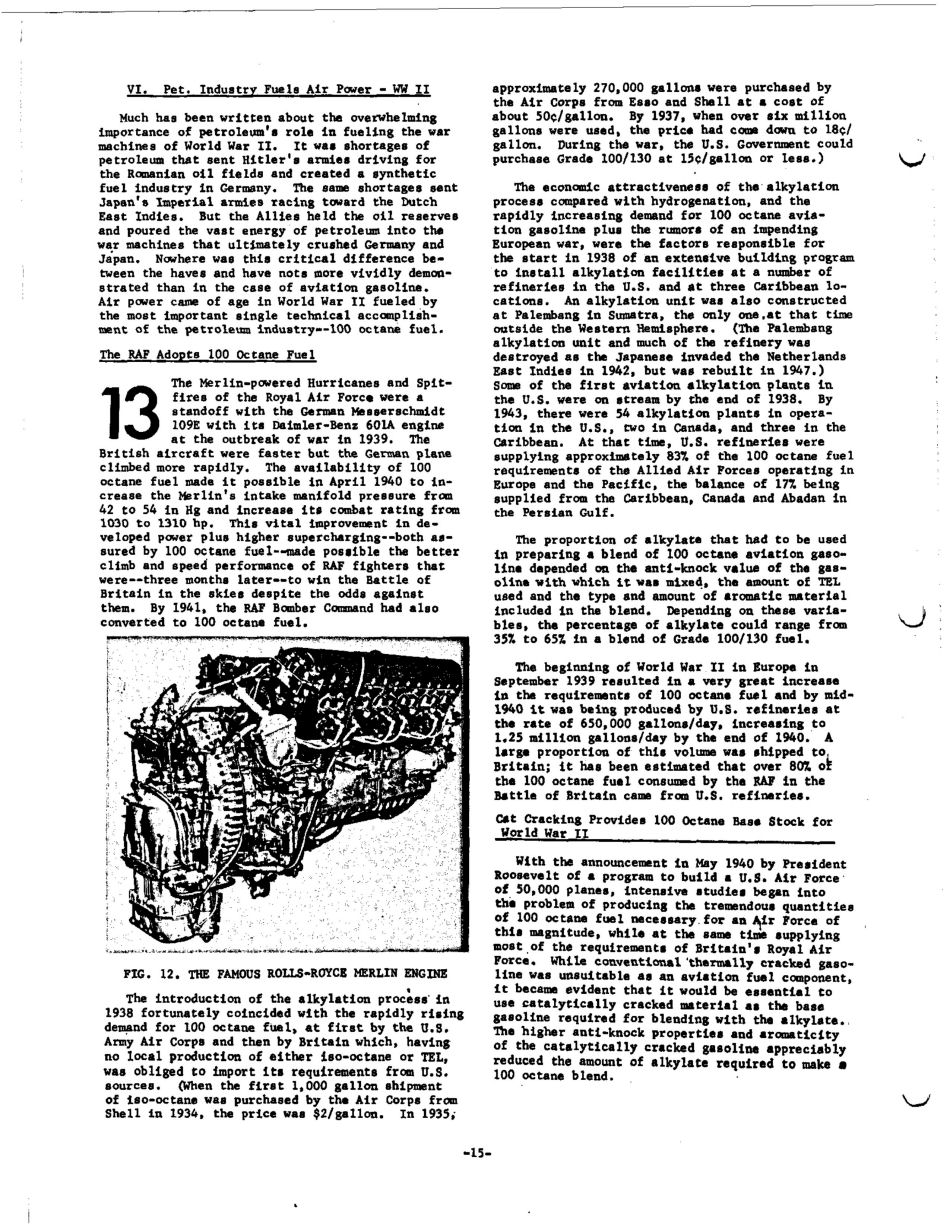 A. R. Ogston, excerpt from History of Aircraft Lubricants (Society of Automotive Enginees, Inc. Warrendale, PA USA), p. 12.  RAF History 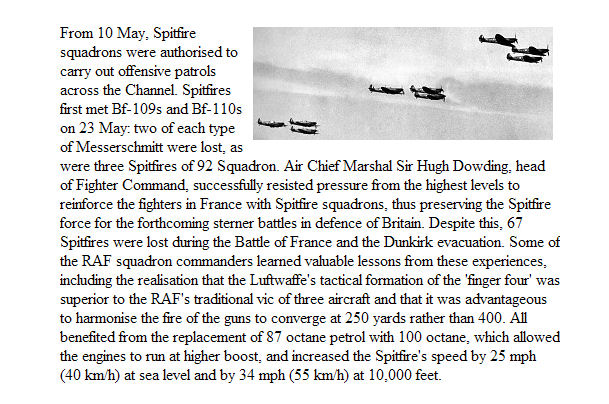 602 Sqdn. Spitfire I 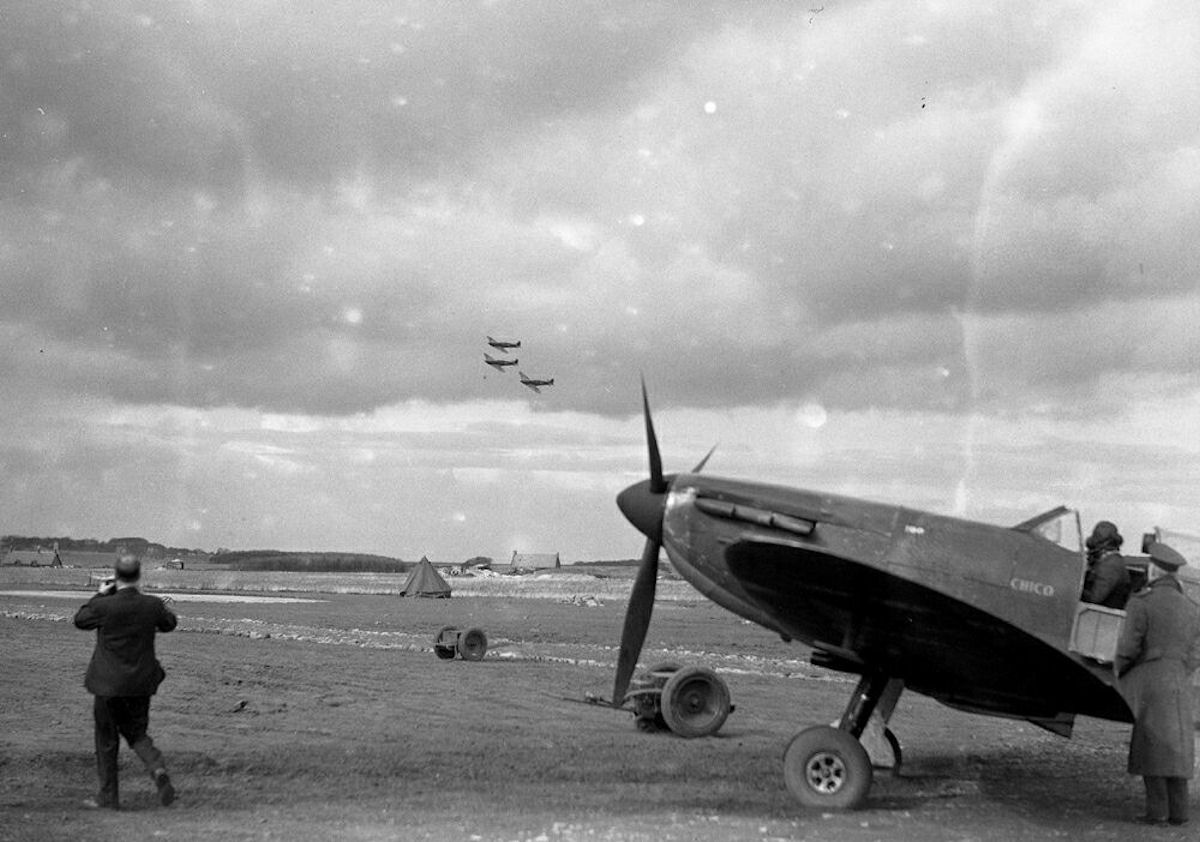 609 Sqdn. Spitfire I  610 Sqdn. - Hawkinge, July 1940 
Last edited by lane; 02-29-2012 at 01:00 PM. |
|
#8
|
|||
|
|||
|
Quote:
In response to your claim in point 3 of your post (434) on page 44, and I quote you said "the petrol normally used at that time was 87 Octane" I find this slightly misleading as the time in question is 1937, which you did not state nor was there an attempt to put the quote in context. Whilst it does say on Page 557 of the original text (link) that “the petrol normally used at that time was 87 Octane” it is referring a to pre-war flight endurance test in 1937 where the Spitfire in question used “fuel of a higher Octane” (than 87 Octane). Note, this is stating that in 1937 the petrol normally used was 87 Octane – it does not mention the normal Octane used during the Battle of Britain 3 years later in 1940. I fail to see the significance of this quote regarding Octane usage during the Battle of Britain when we examine the whole quote. If I have missed any quotes in the document regarding 87 or 100 Octane fuel usage during the Battle of Britain, and I may well have done considering it's a huge document, could you please quote them directly and list the page in the document that they appear so we may examine them in full. For example as I have done above by stating the quote and it’s appearance on page 557 with a working link to the page. Thanks. Quote:
MoGas, could you post a summary or even better images of the article you are referring to in english since it seems the magazine you are referring to requires a subscription. Thanks, Bounder Last edited by Bounder!; 02-29-2012 at 02:25 PM. Reason: found the document in question |
|
#9
|
|||
|
|||
|
Through all his palaver KF is admitting he has not seen the Pips document himself, nor has anyone who has access to the all about warfare forum, so the preamble should read:
"This is from a researcher, researching another subject (Dutch East Indies Fuel levels prior to the Japanese Invasion) at the Australian War Memorial Archives, from a purported document, allegedly copied to the so-called "Australian Military Commission" in England in February 1941, allegedly by Roll Royce to Lord Beaverbrook, allegedly outlining past, current and proposed changes to the Merlin; and factors that affect it's performance. It was purported to be a collection of lose-leaf typed pages, included as an addendum in a report allegedly titled "Fuel Supplies to The British Empire And It's Commonwealth; Outlook, Ramifications and Projections For The Prosecution Of The War;" although this has not yet been found in any of the Australian archives contacted. The reason why it is allegedly included amongst AWM papers is because the Australian Government at that time was supposedly protesting vigoriously about the continued supply of lower grade 87 octane fuel when it too wanted 100 octane for the RAAF; although no corroberating evidence to support this has been found. McFarland, Pugh, Hart, Perret, Lumsden and even Churchill have all allegedly quoted parts from the report." All the rest is smoke and mirrors by KF; plain fact is he pins 100% faith on a set of documents he has not seen or read, based on a short summary found on a forum, and Pips, who posted the material, has doubts about its veracity. Interesting Last edited by NZtyphoon; 02-29-2012 at 07:36 PM. |
|
#10
|
|||
|
|||
|
|
 |
|
|